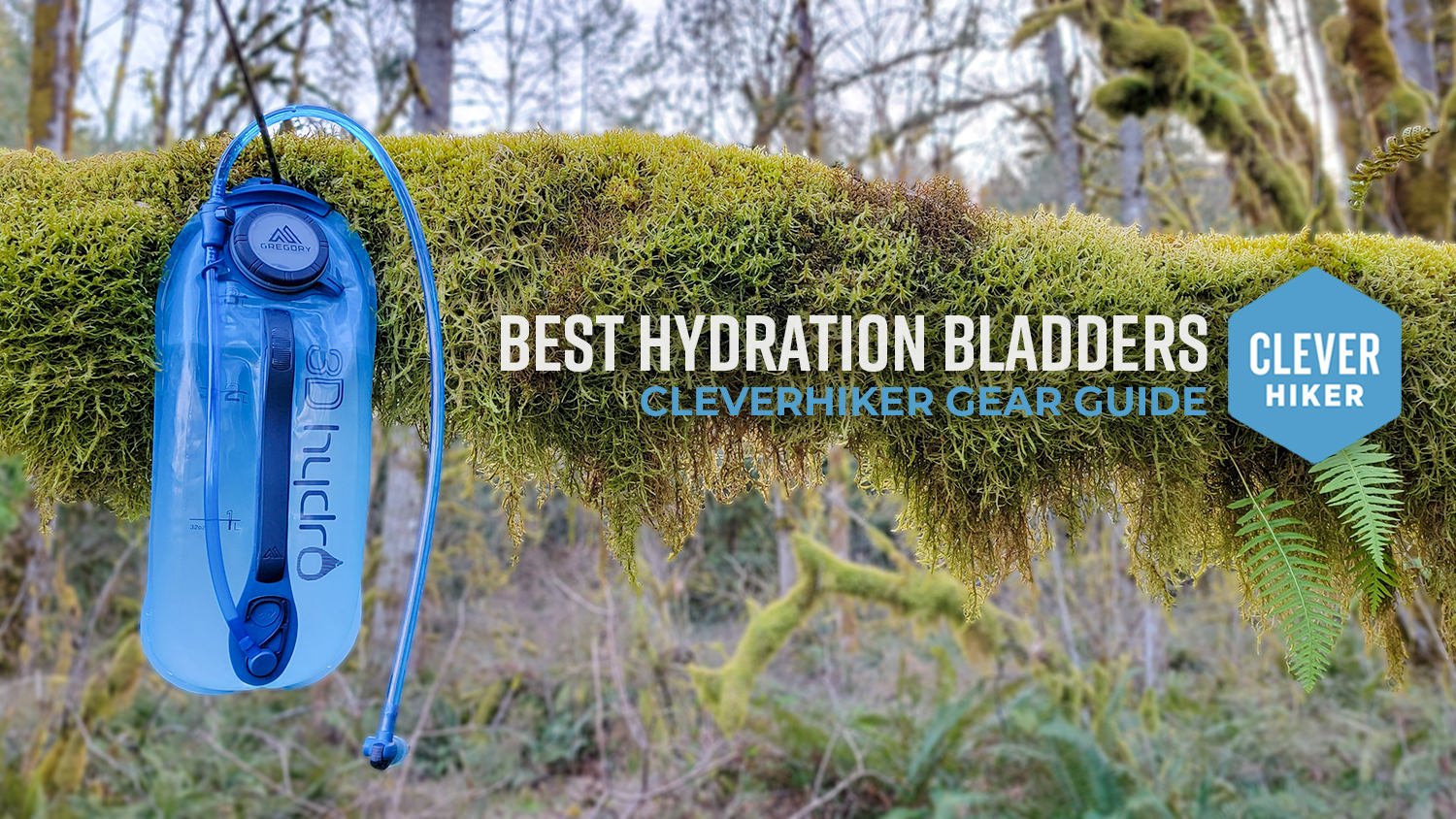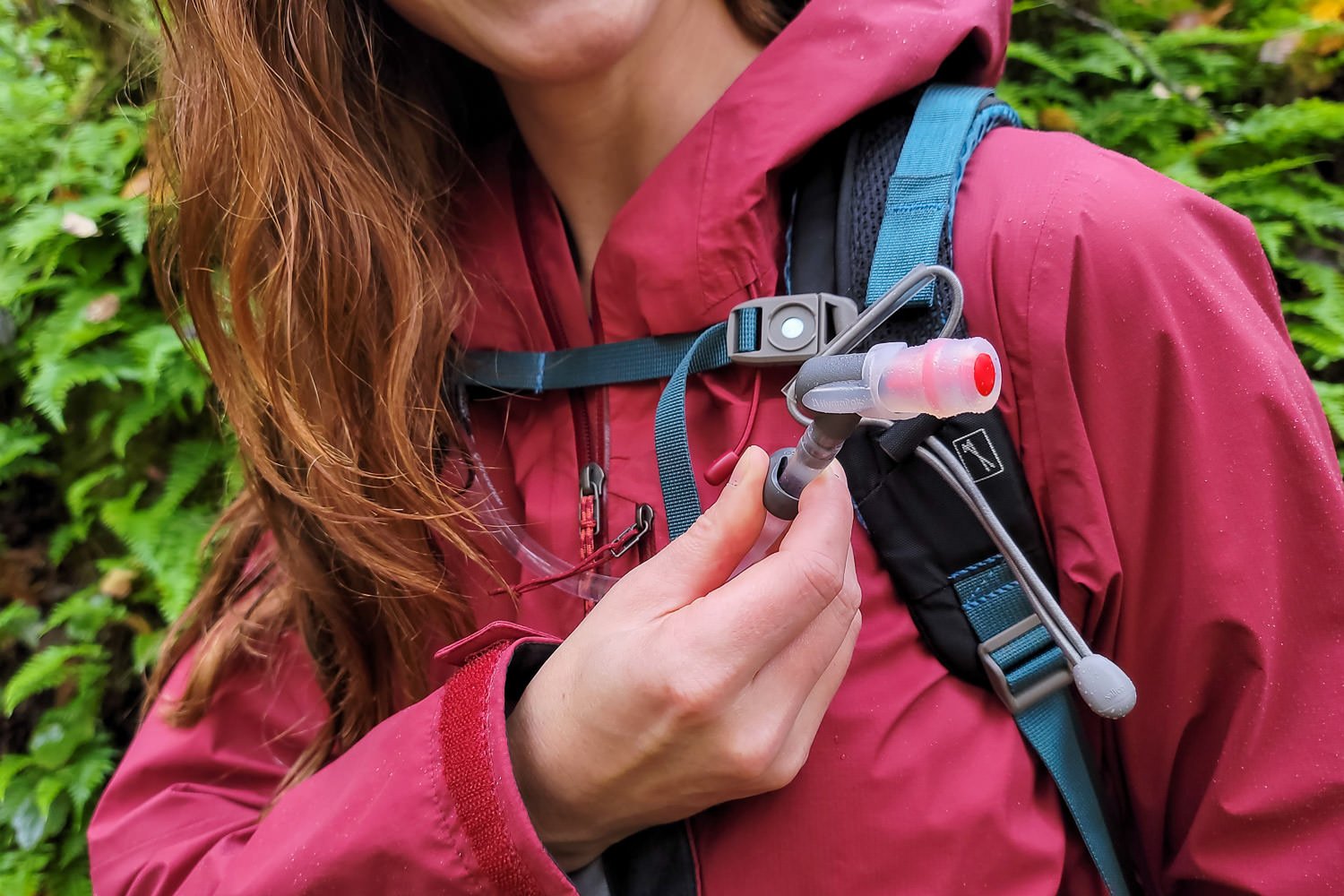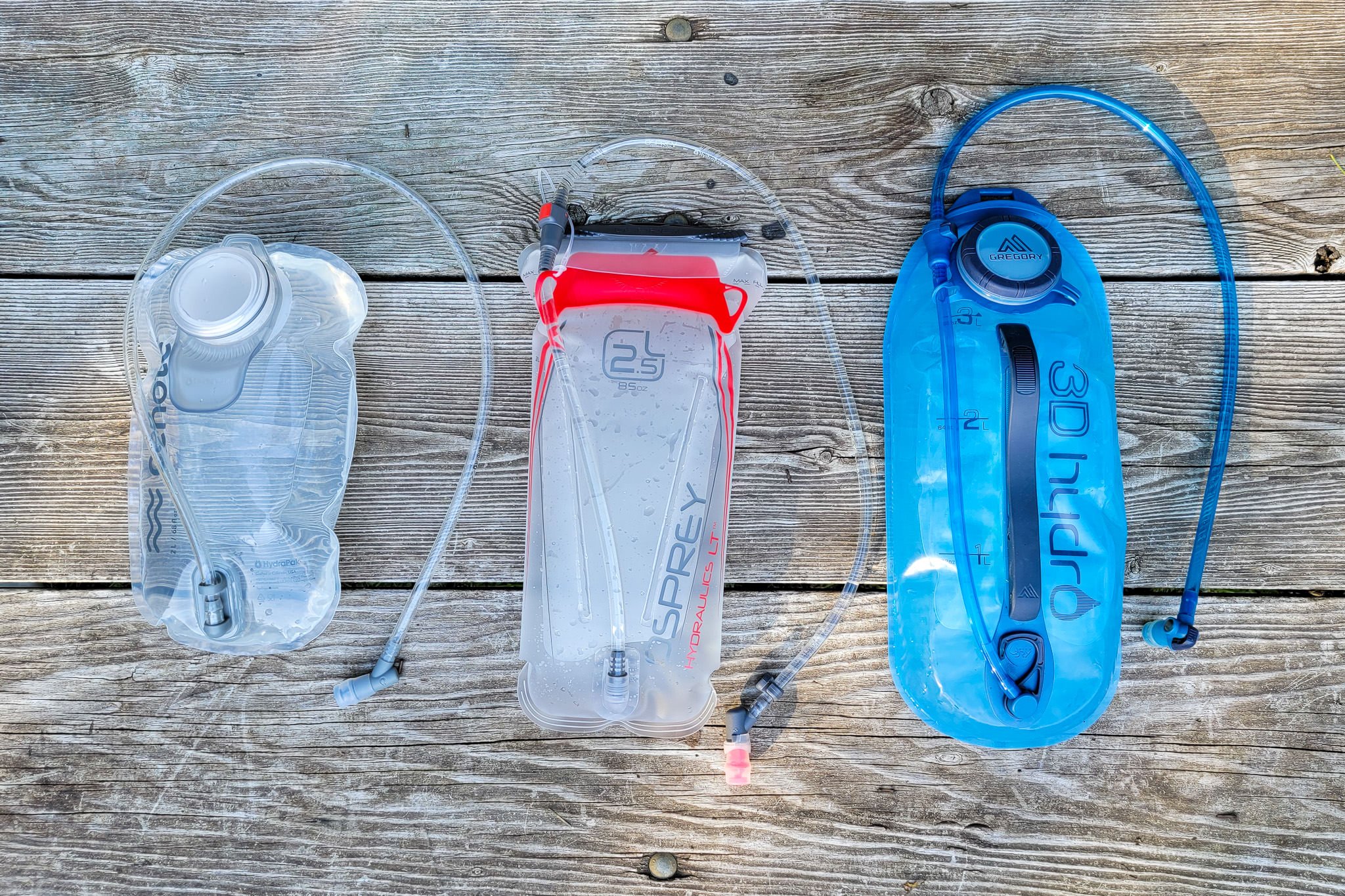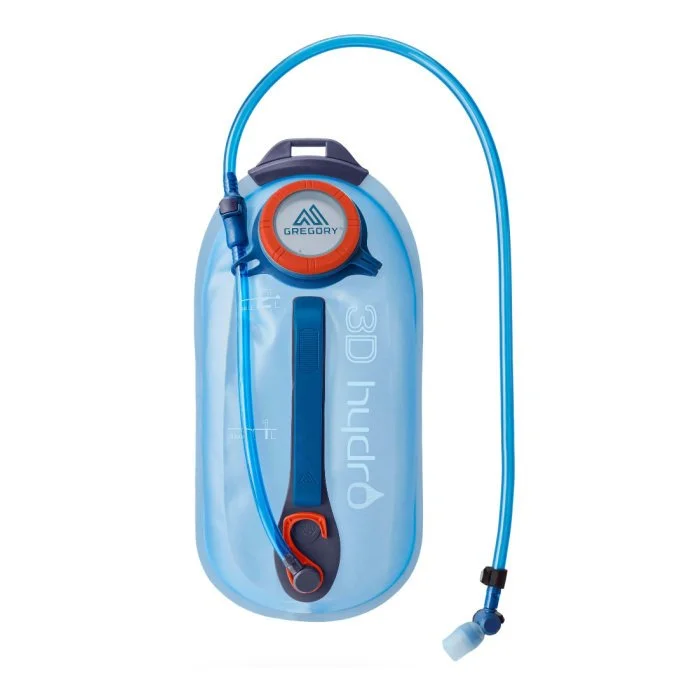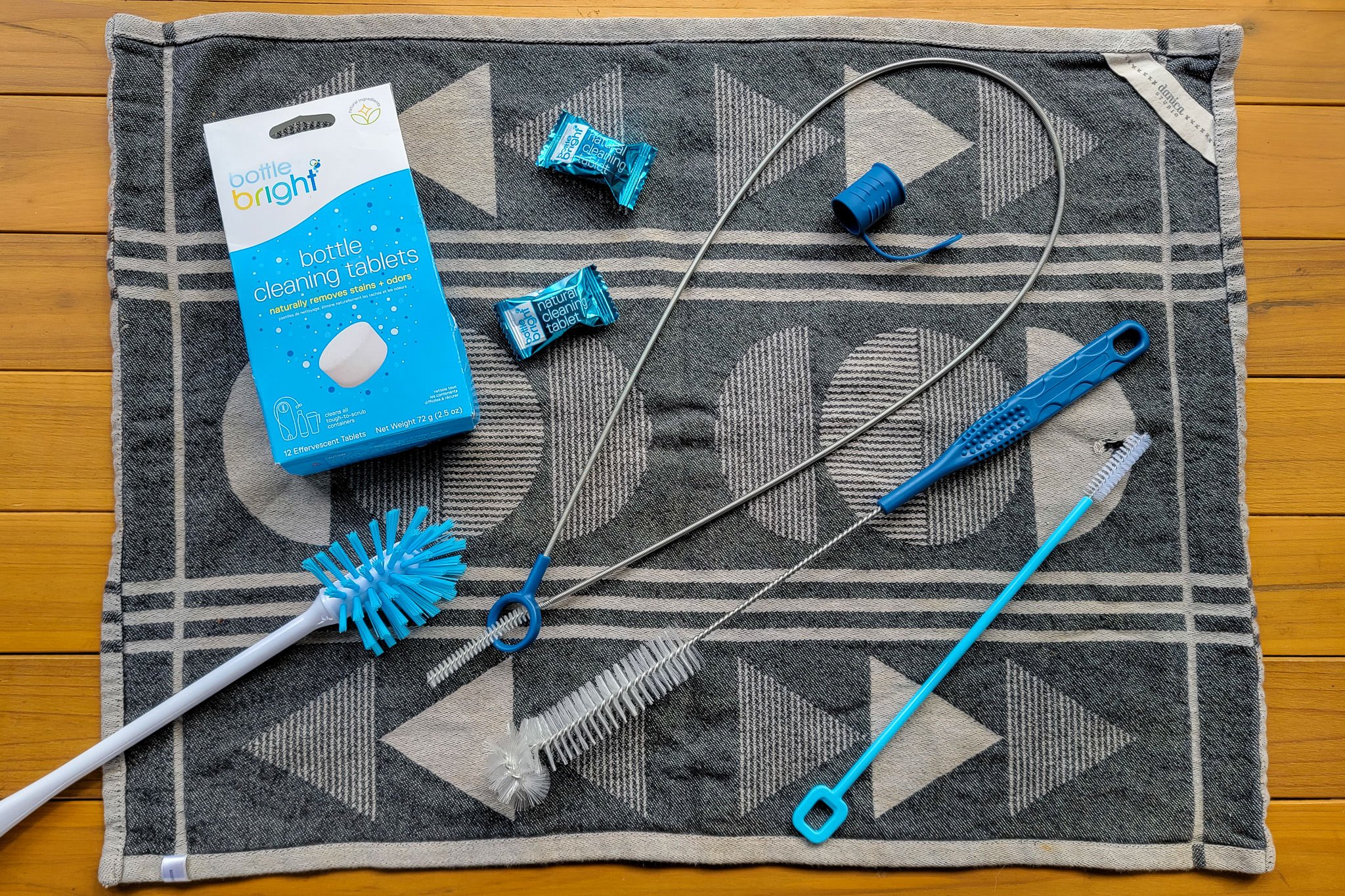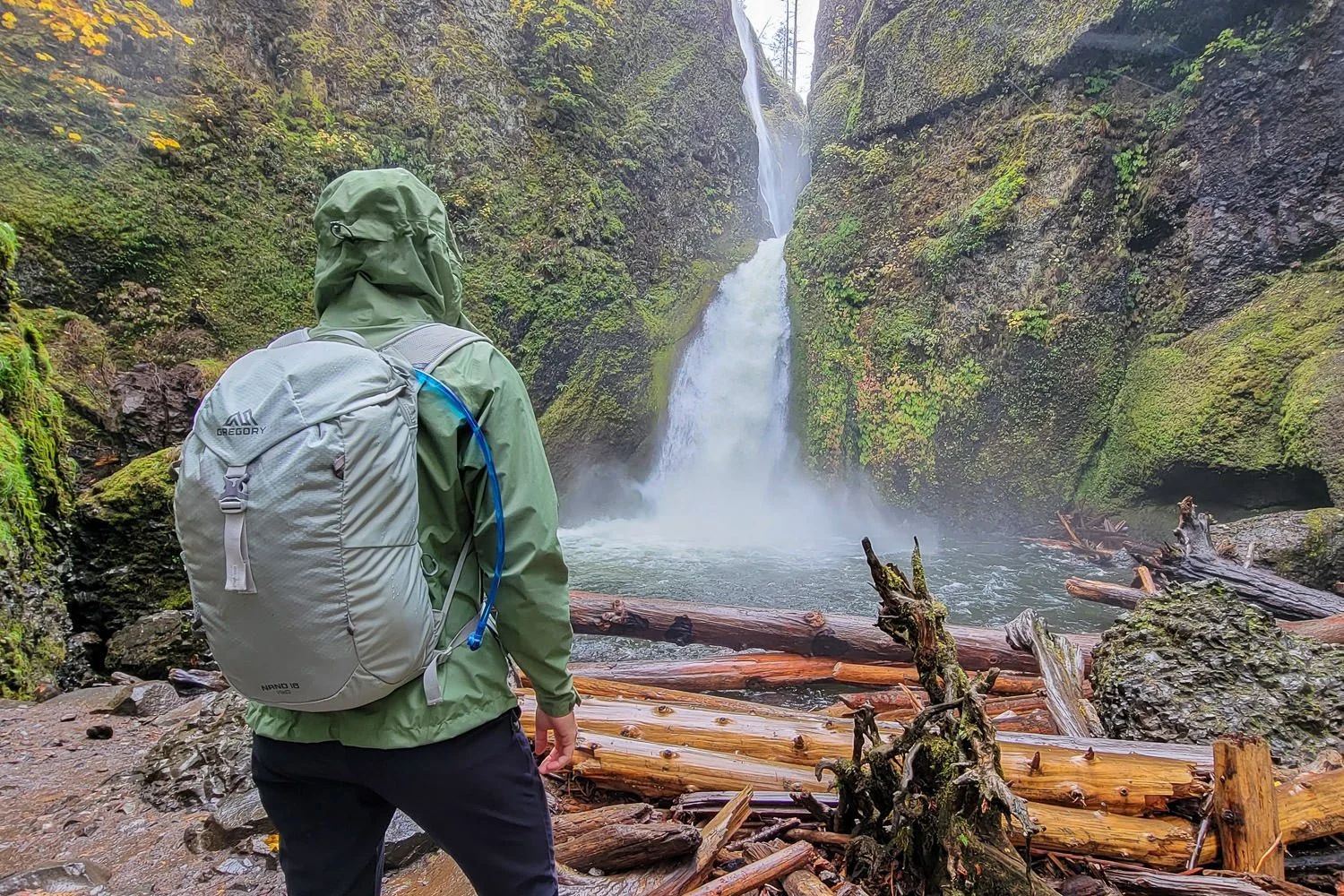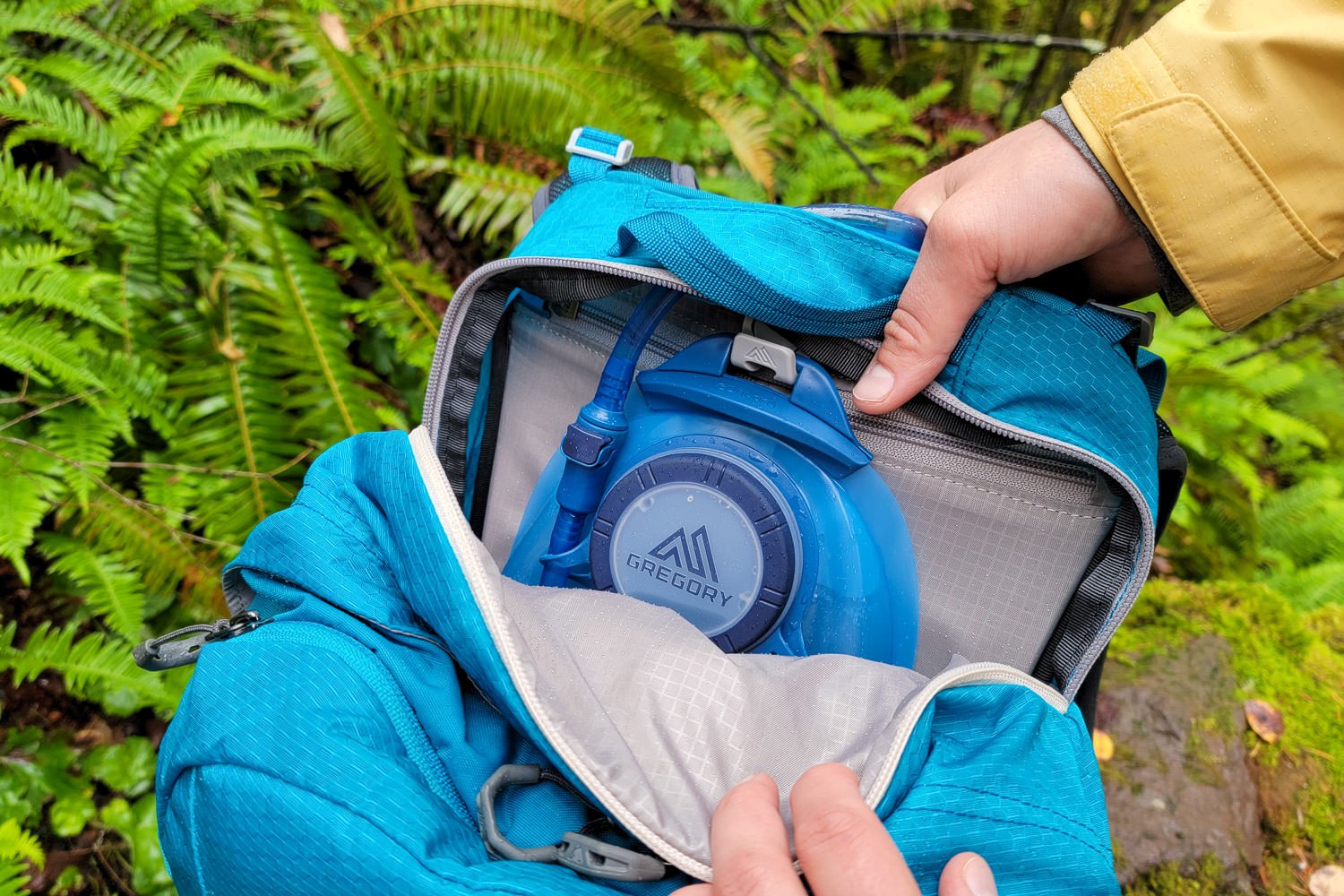Hydration bladders all serve the same basic purpose: convenient hydration on the go. But there are some key differences to look for that'll help you determine which one will fit with your lifestyle.
We've used them all - from basic bladders to reservoirs with all the fancy bells and whistles. So if you're on the hunt for a new drinking system, you can trust us to point you to the best hydration bladder for your needs.
The Osprey Hydraulics has a locking bite valve & a magnet to hold the mouth peice conveniently at your shoulder
Quick Recommendations
Check out this quick list of our favorite hydration bladders if you’re in a hurry, or continue scrolling to see our full list with in-depth reviews.
Best overall hydration bladder: Gregory 3D Hydro
Best ultralight hydration bladder: HydraPak Contour
Best hydration bladder for large-volume backpacks: Osprey Hydraulics
Affordable & reliable hydration bladder: CamelBak Crux
Best budget hydration bladder: Kureida
The Osprey Hydraulics LT has baffles that help maintain its low-profile shape & reduces sloshing in your backpack
What’s Most Important to You in a Hydration Bladder?
PRICE - A great hydration bladder doesn’t have to be expensive, but it can be well worth spending a little more to get a high quality bladder that’s reliable and convenient if you’ll be using it a lot. On this list, we recommend a range of reservoirs from budget to high-end.
Best budget hydration bladders: HydraPak Cenote & Kureida
Best value hydration bladders: Gregory 3D Hydro, HydraPak Contour, Osprey Hydraulics & CamelBak Crux
The high-end Osprey Hydraulics vs. the budget Kureida
FEATURES - A basic hydration bladder will quench your thirst on the move, but extra features like a bite valve shutoff, a quick-disconnect tube, and a magnet to stick your bite valve to your backpack’s sternum strap will make for a smoother experience. Our favorite systems are also designed with details that make filling, cleaning, and drying hassle-free.
Feature-rich hydration bladders: Gregory 3D Hydro, HydraPak Contour & Osprey Hydraulics
Basic bladders: CamelBak Crux, HydraPak Cenote & Kureida
Many bladders come with a quick disconnect to make it easier to refill without having to route the tube through backpack ports
WEIGHT - We tend to prefer lightweight gear since weight adds up quickly in a backpack. Choosing a hydration bladder that’s as light as possible can ultimately lead to a more comfortable carry. That said, getting a bladder with extra convenience features can be well worth carrying a few ounces of additional weight.
Lightest hydration bladders: HydraPak Contour & HydraPak Cenote
Slightly heavier hydration bladders with more features: Gregory 3D Hydro, Osprey Hydraulics, CamelBak Crux & Kureida
The Gregory 3D Hydro is one of the most the most durable hydration reservoirs on the market & also one of the lightestweight
CAPACITY - Most bladders are available in a variety of capacities. 2L bladders are the most popular, since they’re a great size for shorter day hikes and backpacking trips when you plan to refill. Larger bladders (3L) give you the ability to carry more for longer stretches between refills. Small bladders (1-1.5L) are the lightest and most compact, so they fit well in small daypacks and will be less sloshy in running vests.
Best small bladders (1-1.5L): Osprey Hydraulics LT 1.5L & CamelBak Crux 1.5L
Best medium bladders (2-2.5L): Gregory 3D Hydro 2L, Osprey Hydraulics 2L / LT 2.5L, CamelBak Crux 2L, HydraPak Contour & Kureida 2L
Best large bladders (3L+): Gregory 3D Hydro 3L, Osprey Hydraulics 3L, CamelBak Crux 3L & HydraPak Contour 3L
The HydraPak Cenote 2L (left), Osprey hydraulics LT 2.5L (middle) & Gregory 3D Hydro 3L (right)
Best Hydration Bladders of 2023
BEST OVERALL HYDRATION BLADDER
MSRP: $43
WEIGHT: 10.2 oz. (2L)
CAPACITIES AVAILABLE: 2L, 3L & Trek (3L with push-button pour spout to use in basecamp)
PROS: Dries quickly & completely, durable, convenient features, easy to fill in shallow sinks
CONS: A bit expensive, cap can get cross-threaded (always double-check for leaks by turning upside-down)
BOTTOM LINE: The Gregory 3D Hydro is our favorite hydration bladder overall because it’s durable, and it has a ton of handy features. What really sets it apart is that it’s soft-molded with a water bottle-like material. That means it holds its shape and stays open to dry completely between uses - greatly reducing the chances of grime accumulation. It even has a hook to hang it upside down when you’re done. The easy care and durability of the Hydro make it our #1 recommendation for anyone who'll be using their reservoir often, and it's definitely the one we'll be using the most for our hikes.
BEST ULTRALIGHT HYDRATION BLADDER
MSRP: $43
WEIGHT: 5 oz. (2L)
CAPACITIES AVAILABLE: 1.5L Lumbar, 2L, 3L
PROS: Ultralight, durable & flexible material, baffles for minimal sloshing, reversible for easy drying
CONS: Expensive
BOTTOM LINE: Every ounce of weight savings counts when you’re on the trail, which is why we were stoked to find the HydraPak Contour Reservoir. The 2L bladder only weighs 5 oz., which makes it 50% lighter than some of the leading competition. The Contour may be light, but it doesn’t skimp on convenient features. The most noteworthy traits are the leak-free zip top, the tab to turn it inside out to dry, and the magnetic bite valve that sticks to your backpack’s sternum strap. We also appreciate the inner baffles that help keep sloshing to a minimum. The Contour is a little spendy, but it’s right on par with the best reservoirs on the market. This high-quality and outstandingly lightweight bladder is a great choice that will last for many years of adventures.
BEST HYDRATION BLADDER FOR LOADED BACKPACKS
MSRP: $35
WEIGHT: 7.4 oz. (2L)
CAPACITIES AVAILABLE: 2L & 3L, 1.5L LT & 2.5L LT (LT - lightweight with no backer plate)
PROS: Lots of convenient features, slim/stiff design makes it easier to get in & out of a loaded backpack, easy to clean, high-flow bite valve
CONS: Not as easy to dry as the Gregory 3D Hydro
BOTTOM LINE: The high quality and full-featured Osprey Hydraulics Reservoir is a great choice for anyone who needs reliable hydration on the go, but we like it especially when using large-volume backpacks. Most hydration bladders are a little um… floppy, but this one has a solid backer plate that gives it some rigidity. This holds the bladder in a slim, low-profile shape which is both comfortable to carry and easy to slide into a full backpack’s narrow hydration compartment. We also appreciate how easy it is to clean and ensure a leakproof seal with the Hydraulics’ wide slider top. The Hydraulics has everything a hiker could want for convenience on the trail, and it comes in a bunch of sizes for different trip lengths. The 1.5L and 2.5L LT models forgo the backer plate for those who prefer a bladder that’s a bit lighter.
AFFORDABLE & RELIABLE HYDRATION BLADDER
MSRP: $37
WEIGHT: 7 oz. (2L)
CAPACITIES AVAILABLE: 1.5L, 2L, 3L & 2L with Filtration Kit
PROS: Affordable, extra wide port makes it easy to clean, large handle
CONS: Quick disconnect port is less accessible than some, a bit tougher to fill completely in shallow sinks
BOTTOM LINE: The name CamelBak has been synonymous with hydration bladders since the first one hit the market in the 1980s. What started as an IV bag filled with water in a tube sock decades ago has evolved to their most modern offering, the CamelBak Crux. While it doesn’t have quite as many features as some bladders, we’re fans of the Crux for its durable material and extra-wide opening that makes it easy to clean. The large handle on the port makes it easy to hold, though the bag hangs more vertically than some, so it’s tougher to fill to the brim in shallow sinks. The Crux delivers the reliability people expect at an affordable price, and it comes in a ton of sizes to fit different packs.
BEST BUDGET HYDRATION BLADDER
MSRP: $13
WEIGHT: 7 oz. (2L)
CAPACITIES AVAILABLE: 2L
PROS: Affordable, a few convenient features
CONS: Not as durable as some, not as easy to clean & dry as others
BOTTOM LINE: If you’re on a tight budget, but you still want the convenience of hands-free hydration on your hikes, we recommend the Kureida bladder. It costs far less but has some of the same features as more expensive drinking reservoirs, like a locking bite valve with a dust cover and quick disconnect tube. The components aren’t as high quality as those you’ll find on some of our favorite high-end bladders, and we don’t expect it to last as long as some. That said, the Kureida bladder will get you out on the trail for a fraction of the price and should hold up well enough for the occasional user.
The Kureida hydration bladder is basic, but it’s a great option for occassional users or anyone on a budget
Honorable Mentions
The following hydration bladders didn’t make our final list, but they’ve still got a lot of good things going for them. You never know, one of them might be perfect for you:
HydraPak Cenote - an ultralight (2L: 4.8 oz.) and affordable ($25) reservoir with a refreshingly uncomplicated design
Kureida Dual Hydration Bladder - a unique bladder with a separate chamber and a second hose for electrolyte drink mix (would be great if sharing with young kids)
Platypus Big Zip EVO - another feature-rich bladder with a zip-top closure that’s similar to the Osprey Hydraulics, but not quite as durable
Accessories
Some hydration bladders come fully decked out with everything you could need or want, but you may choose to customize some of the more basic hydration bladders with a magnetic bite valve or quick disconnect tube.
There may also come a time when you need to replace a dingy bite valve sheath, worn out drink tube, or tired connector. Here are some links to help you quickly find the right cleaning kit, accessories, and replacement parts for your reservoir.
Gregory 3D Hydro Accessories:
HydraPak Contour Accessories:
Osprey Hydraulics Accessories:
CamelBak Crux Accessories:
The Gregory 3D Hydro holds its shape and stays open to dry completely between uses & it even has a hook to hang it upside-down
CRITICAL HYDRATION BLADDER CONSIDERATIONS
HOW MUCH WATER SHOULD I CARRY? - The liquid capacity of a hydration bladder is usually measured in liters (L), and most hold between 1L-3L. Water is heavy (1L weighs approx. 2 lbs.), so it’s important to carefully consider how much you’ll actually drink and plan accordingly. It can be nice to have a larger maximum capacity for long days on the trail, but you don’t have to fill your reservoir to the brim if you want to keep your load light. To estimate how much water you’ll need to carry, a good rule of thumb is to have .5L per hour for moderate activity in mild temperatures. You may need to dial this up depending on conditions and personal preferences. Strenuous hiking in high heat may call for 1L of water or more per hour.
The CamelBak Crux has a huge port & a large handle to make filling easy
FILTERING WATER ON THE GO WITH A BLADDER - If you’ll be refilling your hydration bladder from natural sources on the trail, you’ll need to carry a filtration method to make water safe to drink. Chlorine Dioxide Drops / Pills are lightweight and affordable, but there’s a bit of a waiting period. There are reservoir filter kits you can pick up, or you can make your own inline system by ordering an extra quick connect kit, bite valve, and a Sawyer Squeeze. Another option is to bring a filter like the Katadyn BeFree to scoop and filter water into your hydration bladder. Check out our Best Water Filters list for a complete list of our favorite water filtering methods for hiking.
Chlorine Dioxide Drops are one of the easiest filtration methods for hydration bladder users
HYDRATION BLADDER CARE - Most hydration bladders have polyethylene linings, which retain tastes and odors more easily than polycarbonate bottles. Because of this, we recommend not filling them with anything but water. The best way to maintain any plastic water bottle or bladder is to rinse it out after each use, and let it air dry completely. Periodically drop in a fizzy cleaning tablet, like these from Bottle Bright, or a tablespoon each of bleach and baking soda and let it sit overnight. This, along with a thorough scrub down with a bottle brush (see cleaning kit recommendations above), will keep grime, funky tastes, and odors at bay.
Related: If you need a daypack and a hydration bladder, check out our Best Hydration Packs list.
The Gregory 3D Hydro comes as a bundle with some of our favorite Hydration Packs
Need More Gear Advice?
If you liked this list, you’ll love the CleverHiker Gear Guide where we test and recommend tons of outdoor adventure gear from a variety of categories. here are some links to popular articles:
A high quality hydration bladder like the Osprey Hydraulics will last for many miles & hundreds of liters of water
Why Trust Us?
We fully understand how tough it is to find trustworthy gear advice, and that’s one of the main reasons we built CleverHiker. We live for outdoor adventure, and we take these guides very seriously. Here are some of the reasons you can trust us:
Our choices are completely independent and based on personal experience.
We’ve logged over 10,000 trail miles and test outdoor gear for a living.
We own and field test every product we recommend, which is sadly not the norm.
We travel to industry trade shows to learn about upcoming product innovations.
We constantly update our guides when new products launch.
We treat our recommendations as if they were for our family and friends.
We’re lifelong learners and we’re always open to constructive criticism. If you think we’ve missed a product or got something wrong, we’d love to hear your feedback.
The Gregory 3D Hydro has a super quick & convenient hanger (Gregory SpeedClip attachment)
More Information
We hope this guide helps you find the perfect gear for your needs. If you have more questions or a suggestion, we’d love to hear from you! Sign up for our newsletter to stay updated on our latest posts then visit our Facebook page and Instagram to join the community conversation.
If you found this guide helpful, please give it a share on social media! Also, be sure to check out our CleverHiker Gear Guide to see all of our top gear picks.
Thanks for reading and happy trails!
Some of the links on this page are affiliate links, which means we may receive a modest commission if purchases are made through those links. This adds no cost to our readers and helps us keep our site up and running. Our reputation is our most important asset, which is why we only provide completely honest and unbiased recommendations.

